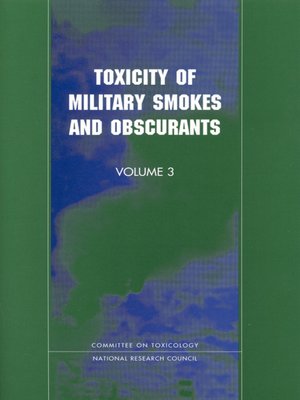
Sign up to save your library
With an OverDrive account, you can save your favorite libraries for at-a-glance information about availability. Find out more about OverDrive accounts.
Find this title in Libby, the library reading app by OverDrive.



Search for a digital library with this title
Title found at these libraries:
| Library Name | Distance |
|---|---|
| Loading... |
A variety of smokes and obscurants have been developed and used to screen armed forces from view, signal friendly forces, and mark positions. Smokes are produced by burning or vaporizing particular products. Obscurants are anthropogenic or naturally occurring particles suspended in the air. They block or weaken transmission of particular parts of the electromagnetic spectrum, such as visible and infrared radiation or microwaves. Fog, mist, and dust are examples of natural obscurants. White phosphorus and hexachloroethane smokes are examples of anthropogenic obscurants.
The U.S. Army seeks to reduce the likelihood that exposure to smokes and obscurants during training would have adverse health effects on military personnel or civilians. To protect the health of exposed individuals, the Office of the Army Surgeon General requested that the National Research Council (NRC) independently review data on the toxicity of smokes and obscurants and recommend exposure guidance levels for military personnel in training and for the general public residing or working near military-training facilities.







